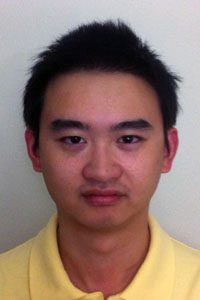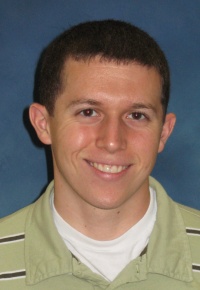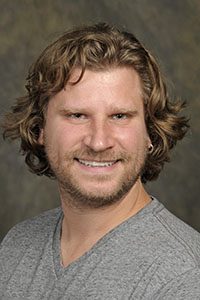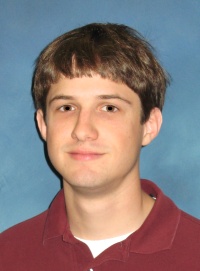
Mode-division multiplexed optical communication in few-mode fibers
As a promising candidate to break the single-mode fiber capacity limit, mode-division multiplexing (MDM) explores the spatial dimension to increase transmission capacity in fiber-optic communication. Two linear impairments, namely loss and multimode interference, present fundamental challenges to implement MDM. This talk will describe methods to resolve those two issues. To compensate loss of different modes, we propose multimode EDFAs with reconfigurable multimode pumps. To de-multiplex signals subject to multimode interference in the MDM, adaptive frequency-domain equalization (FDE) has been proposed and investigated. The multimode EDFA and the FDE algorithm have been used to demonstrate 30 terabit/s MDM-WDM transmission in a few-mode fiber.
Neng Bai was born in Hunan, China. He received B.E. degree in Electrical Engineering from Tianjin University, China in 2008. Currently, he is pursuing the Ph. D. degree in Optics in the University of Central Florida. He is working with Dr. Guifang Li in Optical Fiber Communications Group at CREOL. From 2010 to 2011, he was a research intern in NEC labs, America, working on few-mode EDFA and mode division multiplexed transmission systems. Mr. Bai is the author or co-author of 8 journal papers, 14 conference proceedings and 5 pending patents. He was the 2012 recipient of SPIE Scholarship in Optics and Photonics.
Runners-up

Optically-Controlled Active Media
Active media are complex systems driven by thermal fluctuations and additional energy sources. They are encountered in a variety of phenomena including mobile bacteria, protein diffusion, and turbulent flows. However, studying the non-equilibrium dynamics of active media is often difficult because of their size and complexity. Here we demonstrate that an active medium can be realized and controlled optically through dynamic coupling between multiply scattered light and colloidal particles. As a result of the light–matter interaction, the particles undergo superdiffusion upon a spatiotemporal, random potential. This model offers new possibilities for the coherent control of strongly coupled, complex systems.
Kyle Douglass is originally from Edon, Ohio. He obtained a Bachelor of Science degree in Engineering Physics from Rose-Hulman Institute of Technology in Terre Haute, Indiana, in May 2007 with a specialization in semiconductor device fabrication. He began graduate studies at CREOL in August 2007. From here he has made a number of contributions to the study of light propagation in multiply scattering media and biological tissues, including the first observation of the scale-dependent diffusion of light reflected from a disordered medium. He obtained a Master of Science in Optics in May 2011 and is advised by Dr. Aristide Dogariu.

Multimaterial fibers as a pathway to nano-structured optical and biofunctional materials
Here I will present my recent achievements in appropriating multi-material fiber fabrication as a scalable nanofabrication methodology for producing complex particle structures on length scales extending from 2 mm down to 20 nm. I will then highlight my recent progress on the encapsulation of biological materials in polymeric shells, optical biosensing via surface functionalization, and for the first time control over the geometric distribution of optical and magnetic functionalities in the three-dimensional volume of a single spherical particle, all enabled via multimaterial-fiber-based approaches. These results have wide implications from the design of new paints to site-specific drug delivery.
Joshua Kaufman was born in Chicago, IL. He received his B.S. degree in Electrical and Computer Engineering from Purdue University, West Lafayette, IN in 2008. He joined CREOL in August 2008. Currently he is pursuing his Ph.D. in Optics as a member of the Multi-Material Optical Fiber Device Group under Dr. Ayman Abouraddy. He is the author or co-author of 5 journal papers, 14 conference presentations, and 2 patents.

Chirped pulse amplification in Tm-doped fibers
We have demonstrated a Tm:fiber laser system producing ~300 fs pulses with 1 µJ energy, representing the current record value for peak power from a Tm:fiber CPA system. In developing this novel system, we used a chirped Bragg grating for pulse stretching/compressing and have investigated amplification limits as a function of mode area for the first time in this wavelength regime. In scaling the peak power record from 230 kW demonstrated in 2005 to >3 MW, this work has significantly improved the state-of-the-art and demonstrates the possibilities to further scale Tm:fiber CPA systems potentially to the multi-GW peak power level.
Andrew Sims received his B.S. in Physics from Samford University, Birmingham, Alabama, in 2007. In August of 2007 he joined CREOL and has been a member of the Laser and Plasma Laboratories, under the direction of Professor Martin Richardson, where he has focused on high average power and high peak power fiber laser development. In 2009 he received his M.S. degree and successfully defended his Ph.D. in December 2012. He is the author or coauthor of 9 peer reviewed publications and the first author on 11 conference presentations.